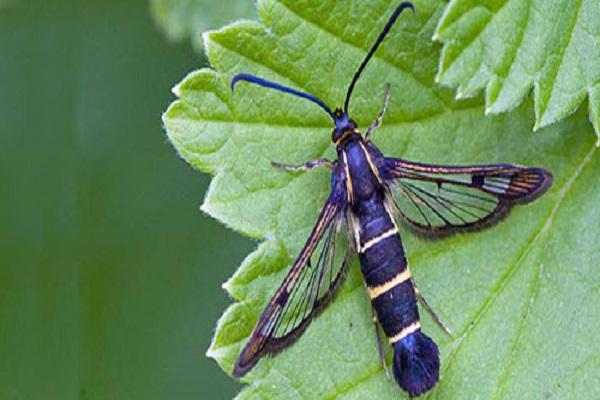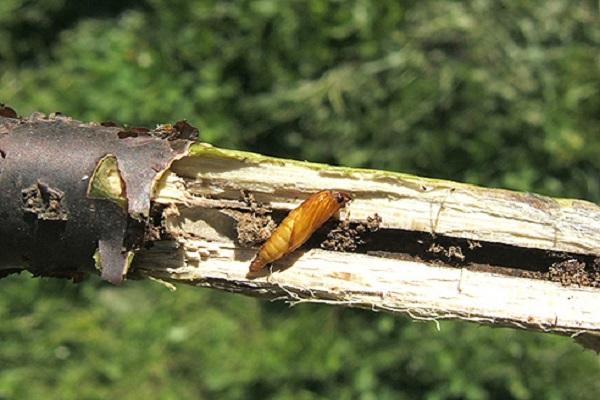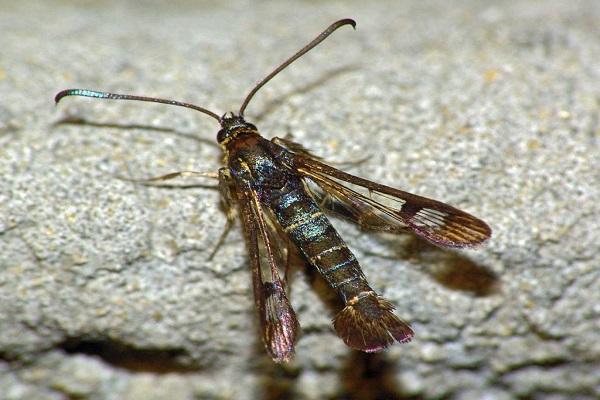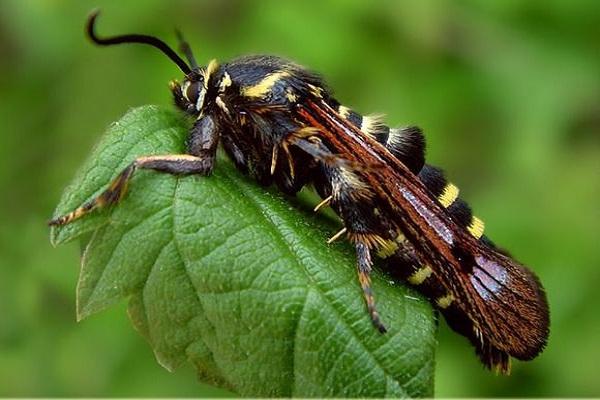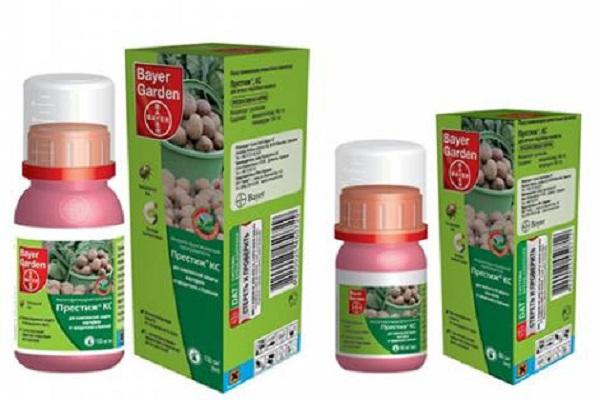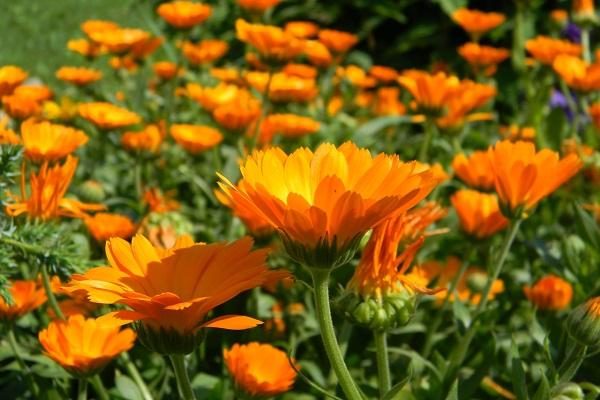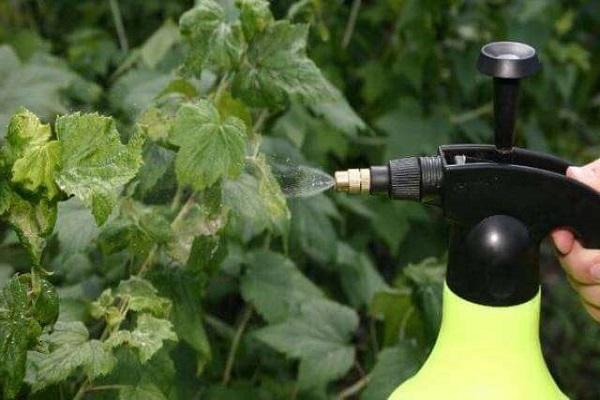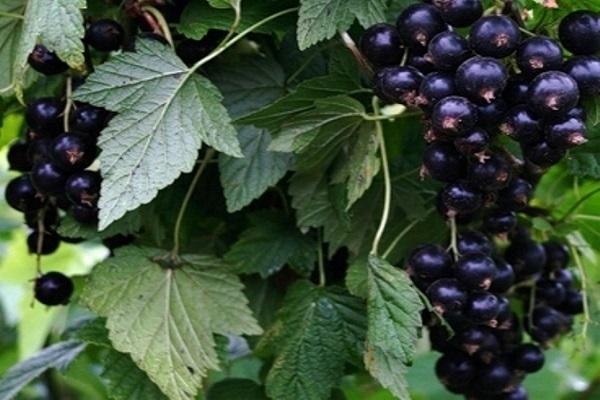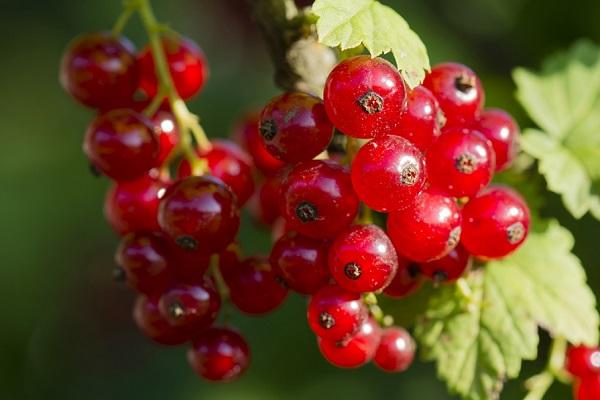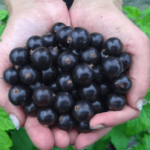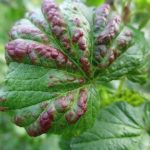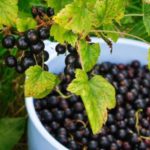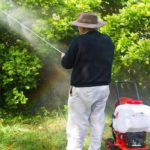If in the spring you begin to notice that on healthy currant bushes the branches suddenly wither and dry out, and on sections of dead shoots you can see a black core, then you are dealing with a glass cell. The pest should be treated with full responsibility, as it is capable of destroying the harvest of berry crops. You will learn further how to get rid of glass from currants.
- Appearance and life stages of the pest
- Signs of fruit bush infection
- Why is glass glass on currants dangerous?
- How to get rid of a butterfly?
- Biological protection
- Specialized drugs
- Folk, proven methods of struggle
- Processing terms and rules
- Frequency of procedures
- Resistant varieties
- black currant
- red currant
- Preventive actions
Appearance and life stages of the pest
Externally, the glass glass looks like a small wasp with narrow wings, distinguished by orange stripes along the edges. The body of the pest is oblong, reaching one centimeter in length. Females have three light stripes, males have four. Insects feed on the sap or pollen of crops.
At the end of May or beginning of June, the glassfish lays about 50 eggs, the length of which reaches 70 millimeters; they are easily recognized by their oblong shape. To lay a clutch, the insect climbs into the bark of the shoot, always in close proximity to the young bud.
The greatest harm is caused by the larvae of the pest, namely caterpillars of white or beige color, which reach a length of up to 2.5 centimeters, since 10 days after hatching from the eggs they destroy the shoots from the inside. Parasites, penetrating into the thickness of the stem, feed on it and develop. Thus, sooner or later, they reach the core of the plant.
With the beginning of spring, the caterpillar comes out into the light, pupates and gives life to a new generation. A new butterfly appears already in June, when the average air temperature exceeds +15 degrees.
The insect remains active for 40-42 days, and the life cycle is two years.
Signs of fruit bush infection
In the first year, the branches affected by the glassware are almost impossible to distinguish from a healthy plant, but it can be noted that the leaves and berries begin to shrink. It is for this reason that the pest is difficult to detect in the early stages of its appearance.
Damaged branches begin to actively wither and dry out at the end of flowering or at the moment when berries begin to form (during active feeding of older caterpillars).It is easy to notice these damages only when the leaves begin to bloom the following spring (especially in contrast to healthy plants).
If you start harvesting dry branches, dark holes with black walls are marked on the cuts. By cutting the branch lengthwise, you can see the passage, which is filled with caterpillar excrement, or even the caterpillar itself.
Why is glass glass on currants dangerous?
Glasswort, which is parasitic in the central zone, can damage up to 50% of the branches of black currant plants and up to 30% (sometimes up to 47%) of white and red ones. The extent of damage depends on the climatic conditions in the region.
How to get rid of a butterfly?
The difficulty in controlling the pest is due to the fact that the glass beetle parasitizes the crop in such a way that its life cycle takes place out of sight, that is, inside the currant branches. Therefore, as a rule, the fight against glassware on currants includes a set of various measures, in particular:
- Use of biological preparations, pesticides.
- Traditional methods.
- Using organic farming techniques.
- Preventive measures.
Next, we propose to dwell in more detail on each type of event.
Biological protection
To protect currants from pests such as glasswort, biological preparations that are aqueous suspensions of nematodes are recommended for use. These include such products as Nemabact and Antonem-F, which are used to treat currant cuttings immediately before planting in the ground. To do this, the cuttings must be placed in damp sand with the preparation for three days, and the ambient temperature should be +25 degrees and the sand humidity should be 20%.
Antonem-F is also used to irrigate currant bushes at the moment when the buds begin to bloom. The average liquid consumption is 200 milliliters per plant bush.
Specialized drugs
The use of exclusively biological preparations against pests, unfortunately, is not a sufficient measure, so the use of pesticides remains almost inevitable. Among such products, such drugs as Kinmiks, Karbofos, Iskra, Kemifos, Fufanon and Trichlorometaphos have proven themselves to be the best.
Folk, proven methods of struggle
To get rid of glassware, they also resort to folk methods. For example, crops such as onions, calendula, garlic, marigolds and others are planted between the rows of currants as a deterrent against pests. It is also appropriate to plant elderberry or nasturtium. However, there are also crops that, on the contrary, are able to attract glass, for example, bird cherry.
At a time when butterflies begin to actively move, containers with sand, which are soaked in kerosene, are placed between the bushes of plants. Another good method is to treat currants with any infusion that has a strong aroma. This can be pine needles, wormwood, onion peels, tansy and others.
Such odors have the ability to disorient pests to some extent.
Processing terms and rules
It is necessary to spray the bushes when the first leaves appear. This is considered the right time, since during this period caterpillars begin to appear and reside on the surface of the stems. It is during this period that it becomes possible to destroy the glass as effectively as possible.
Currant bushes must be thoroughly sprayed with one or another preparation. So, 1-1.5 liters of solution are spent on each plant.
Frequency of procedures
In the spring, before the buds begin to bloom, black, dry and frozen branches are subject to pruning, which is done at the root so that there is no stump. Those shoots that are located under the bush on the ground are also removed. It is important not to harm healthy parts of the bush.
Closer to winter, sanitary pruning of currants is carried out. The bush is thinned out, thus losing underdeveloped or dried out shoots. All cuts must be treated with garden varnish or a special paste.
As for preventive treatment with insecticides, it is carried out after the onset of heat. Most experienced owners of garden plots prefer the drug Entonem-F. Processing occurs before the leaves appear and until the ovary begins to form. If necessary, the procedure is repeated after two weeks. As soon as the snow melts, the ground is loosened and sprinkled with dry mustard, ash or wormwood.
Before the winter period, chemical treatment is repeated. Also, for immunity, spring and autumn feeding is carried out using mineral or organic substances.
Resistant varieties
Until now, breeders, unfortunately, have not developed varieties that would have absolute resistance to such a pest as glassweed. However, there are species that have a certain level of endurance.
black currant
Blackcurrant varieties that can resist the pest:
- Vigorous.
- Summer resident.
- Sechenskaya-2.
- Perun.
red currant
Varieties of red currants that tend to resist the pest:
- Early sweet.
- Natalie.
- Jonker Tets.
Preventive actions
When purchasing currant seedlings, you must carefully inspect them for obvious diseases or damage. In particular, special attention is paid to the core of shoot cuts.
The next preventative measure is to plant elderberries next to the currants, which will scare away the glass beetle from the plant. By the way, elderberry can repel a lot of other pests.
As part of prevention, it would not hurt to plant vegetables (garlic or onions), as well as certain flowers (calendula, marigolds). All of these plants are planted directly between currant bushes. The smell of crops will not allow the pest to find fruit and berry bushes; accordingly, it will not be able to breed offspring in them that pose a threat to the future harvest.

